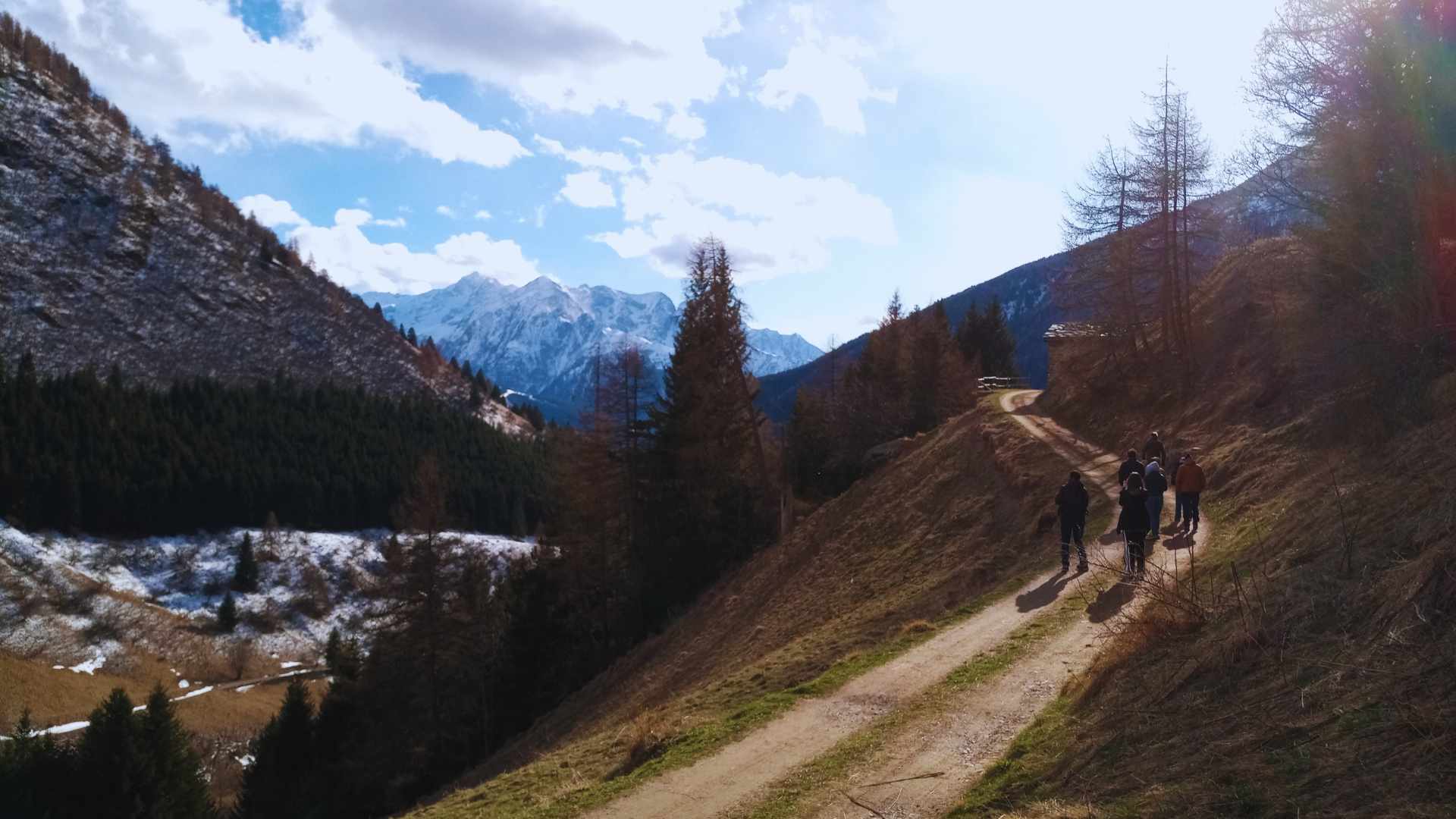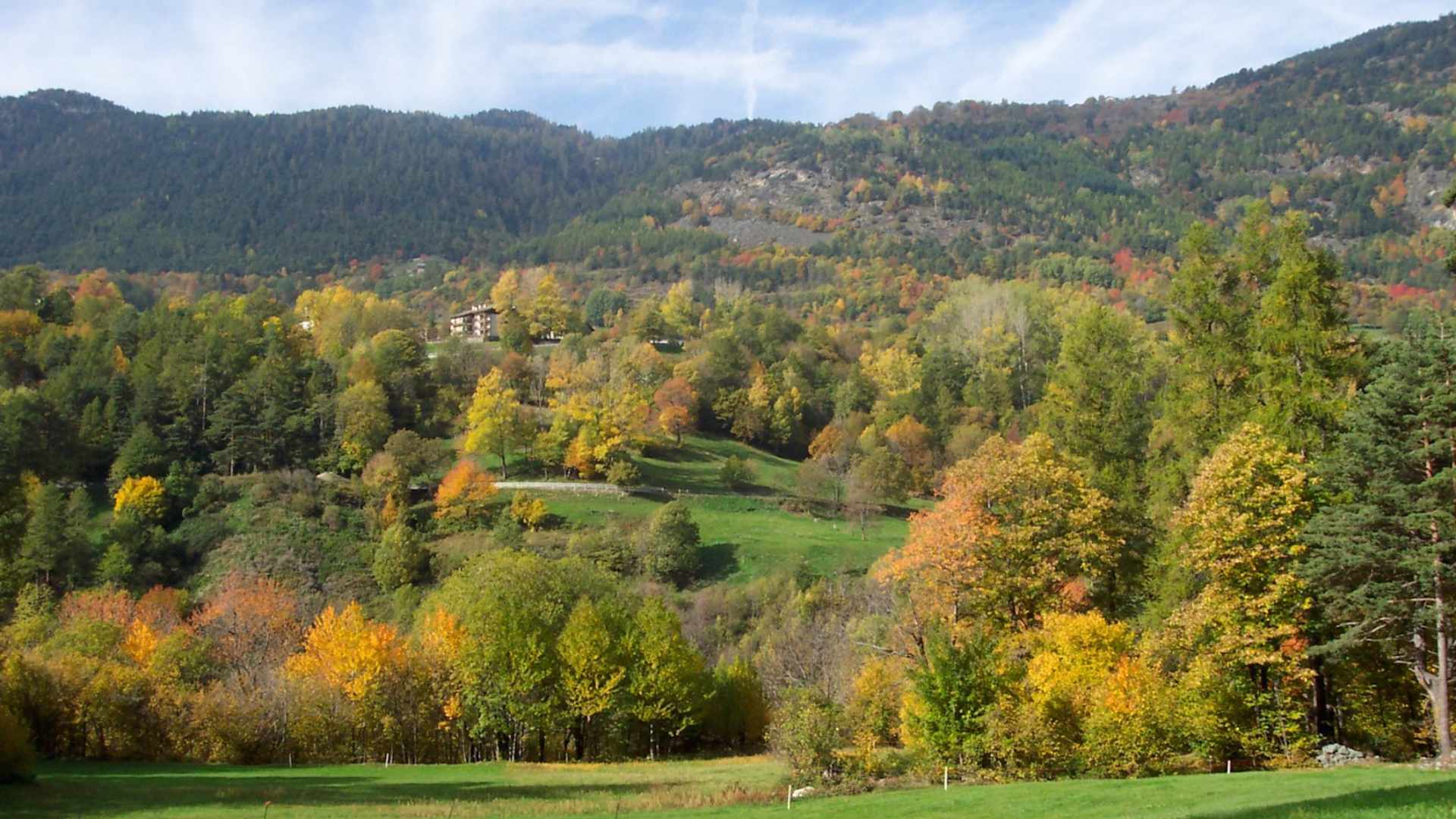By Matteo Vizzarri and Giorgio Vacchiano – Università degli Studi di Milano, Milano, Italy
Italy’s Alpine and Apennine mountain chains are adorned with sprawling forests that act as vital sources of natural resources for the entire nation. From remote mountain villages to urban centres in the country’s plains, these mountain forests play a vital role in supporting Italy’s ecosystem. They provide a home for endangered species, offer resources for local communities, mitigate the impacts of climate change, and safeguard people against natural disasters like landslides, floods, and avalanches.
Mountain forests account for two-thirds of Italy’s total forest cover and are continuously growing (INFC 2015). However, the greening of these mountains doesn’t always improve forest health and resilience. The abandonment of what was formerly agricultural and grazing land has led to a homogenization of mountain landscapes, meaning that diverse mountain environments become less diversified concerning landscape elements. This phenomenon leaves the forests more vulnerable to increasingly severe disturbances and diminishes their capacity to provide essential ecosystem services. As a result, mountain communities experience economic stagnation and social fragmentation, becoming entwined with the processes of marginalisation and peripherality, or a lack of innovation, long distances from core areas and services like hospitals and schools, and poor accessibility (De Toni et al. 2021).

Ponte di Legno, Valle Camonica, Italy. Credits: Matteo Vizzarri
What are the specific threats to Italian mountain forests?
Droughts, wildfires, landslides, wind throw, and insect infestations are becoming more frequent and intense in Italian mountain forests with each passing year. Specifically, the destructive power of wildfires has escalated dramatically. Over the course of two decades, an area of forest close to the size of Rome has burned, averaging more than 6,000 hectares — approximately 700 football fields — each year (EFFIS). In the mountains, wildfires spread rapidly and with heightened intensity due to the complex terrain, which, together with limited accessibility and treacherous conditions, makes firefighting efforts even more challenging. These large-scale disturbances diminish habitats, disrupt natural development and tree growth, curtail expected economic revenues, release substantial amounts of CO2 into the atmosphere, and pose significant safety and health risks to nearby communities.
Extreme weather events such as extra-tropical cyclones, tornadoes, and heavy storms in Italian mountain forests are precipitated by climate change. Just five years ago, during a single night, the Alpine forests were ravaged by the extra-tropical cyclone, Vaia, which obliterated approximately 40,000 hectares of woodland. The staggering aftermath resulted in almost 20 million uprooted trees; communities in five Italian regions witnessed a complete transformation of their mountain landscapes within hours. The repercussions were vast and included the disruption of local economies connected to the forest value chain, the wiping of steep slopes bare making them susceptible to hydrologic hazard, multi-year forest insect outbreaks, and additional costs and safety risks for removing, transporting, and processing the fallen trees. The long-term ability of these forests to restore themselves to a post-disturbance equilibrium state remains uncertain.

San Martino di Castrozza, Italy. Credits: Giorgio Vacchiano
In general, maintaining forest cover serves as a shield against landslides, avalanches, rockfalls, and floods. In mountainous environments, such as watersheds and catchment areas, the combination of intensified precipitation, drought, and inadequate forest and water management escalates hydrological risks. Astonishingly, about 85% of mountain municipalities in Italy face complete or partial landslide risk (UNCEM et al. 2020). Additionally, approximately 65% of mountain municipalities are susceptible to flooding, contributing to Italy having the highest level of hydrological risk among European countries – hosting two-thirds of inventoried landslides in Europe (see ISPRA landslides inventory).
How can we improve the resilience of mountain forests?
The key to resilient mountain forests lies in responsible and participative forest planning, including regular forest management practices, disturbance prevention strategies, and adaptive approaches to forest protection. As of now, only 15% of Italian forests have a management plan (INFC 2015), a figure that must be increased to ensure a timely prevention of economic, social, and environmental losses. In addition, the forest-wood chain must be supported and expanded in a sustainable way. This can be accomplished by addressing issues of parcelization of forest ownership and forest accessibility, improving the skill and competence of forest workers, promoting investments in wood processing plants and small-scale biomass district heating, and supporting forest owners by valorising non-productive forest ecosystem services, such as carbon sequestration, water provision, and hydrogeologic protection (see also Italy’s National Forest Strategy 2018).
Parcelization refers to the breaking up of land area that is under single ownership into multiple smaller parcels, usually for resale.
Carbon sequestration refers to the process of capturing and storing CO2 either in vegetation (i.e., biological carbon sequestration), in underground geologic formations (i.e., geological carbon sequestration), or by means of technological innovation (i.e., technological carbon sequestration).
Promoting natural regeneration and maintaining a mosaic of different forest age classes can also help increase forest resilience by creating a diverse habitat structure and improving ecosystem functions. Collaborative efforts between forest management agencies, local communities, and conservation organisations can facilitate the implementation of active management practices while considering the unique ecological characteristics and socio-economic context of Italian mountain forests. Regarding disturbances, strategies include early detection and rapid response to pest outbreaks and wildfires, implementing appropriate fire management techniques such as fuelbreaks and controlled burns, and enhancing forest resistance and resilience through management interventions (Vacchiano et al. 2017; Spadoni et al. 2023).
What does socio-economic sustainability have to do with the resilience of mountain forests?
Improving socio-economic sustainability in forest-dependent mountain communities is vital for strengthening their ability to cope with and adapt to disturbances and changes in forest ecosystems. This can be achieved by promoting diversified and sustainable livelihood options beyond traditional forest-based activities, such as ecotourism, agroforestry, or the production of non-timber forest products. Further solutions include establishing community-based forest management initiatives that empower local communities to actively participate in decision-making processes and fostering collaboration between forest-dependent communities, local businesses, and government agencies to develop market linkages and access to fair trade and certification schemes (see also Italy’s National Forest Strategy 2018).
Monitoring the state and development of forests over time is essential, as is improving the socio-economic sustainability of communities that depend on mountain forests. Several key indicators and monitoring techniques can be employed to assess the health and development of mountain forests in Italy. These include measuring forest biomass, tree growth rates, species composition, and bio-indicators – species or groups characterizing the quality of an environment including its changes. Remote sensing technologies, such as satellite imagery, aerial surveys, and computer simulation models can provide valuable information on forest cover change, vegetation health, and disturbances like wildfires.
Who is keeping Italian mountain forests resilient today?
The research project, LIFECO2PES&PEF, has simulated future forest dynamics and management practices to minimise a region’s vulnerability to extreme climate events and hydrological risks. The project also evaluated the economic value generated by forest ecosystem services. By identifying forest areas prone to natural disturbances in regions such as the Fusine Regional Zone (Friuli Venezia Giulia region, Alpine forests), Forlivese Regional Forest, and Consorzio Comunalie Parmensi (Emilia Romagna region, Apennine forests), researchers are now able to distribute disturbance management practices more effectively and support the long-term adaptive governance of mountain forest landscapes. Because of this work, researchers today anticipate a reduction in hydrological, wildfire, and windthrow risks within areas spanning 10 to 20 hectares.
Italy’s mountain forests are delicate yet dynamic systems that support environmental, social, and economic sustainability. By ensuring their resilience in the face of external disruptions, we can safeguard natural capital, preserve local economies, and maintain the well-being of people living in distant urban centres who benefit from the treasures these mountains hold.

Val D’Ayas, Aosta, Italy. Credits: Giorgio Vacchiano
Additional material
Giorgio Vacchiano at TEDx BustoArsizio (transcript)


